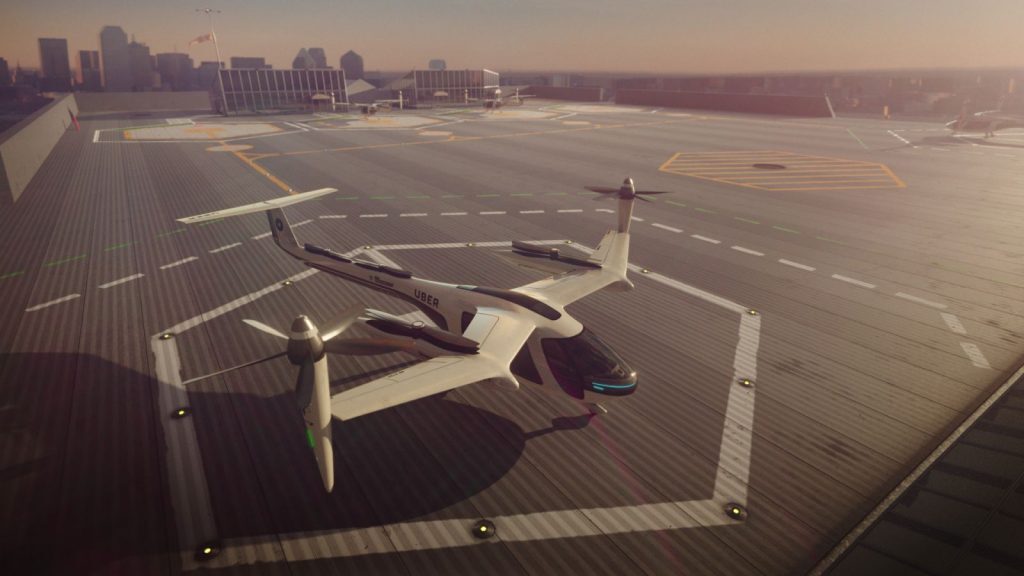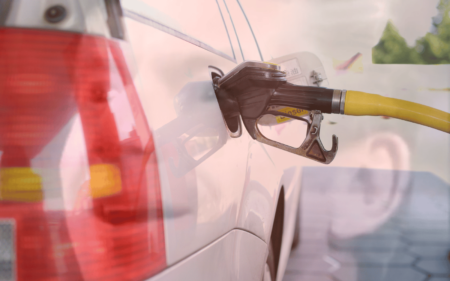Uber has a bold vision for the future of urban transport. By 2023 the ride-sharing startup aims to make small aircraft rides, with vertical takeoff and landing, an affordable option for daily commuters — allowing for something like Joburg to Pretoria in 15-odd minutes. With no traffic? We’re in!
The company has revealed a new concept of their so-called “aerial taxi” at the 2018 Elevate conference in Los Angeles and it looks like a jet had a baby with a massive drone. The prototype has four stacked rotors along the spine for maximum lift, which can be hidden in compartments when landed. It also features a forward-facing rotor used for forward thrust.
“Stacked co-rotating rotors or propellers have two rotor systems placed on top of each other rotating in the same direction,” Uber says. “Initial experimentation of this concept has revealed the potential for significantly quieter performance than traditional paired rotors and improved overall performance.” The flight ceiling for these electrically-powered vehicles will be between 300 metres and 600 metres, according to the company. That should keep them below air traffic and well above regular traffic.
Landing should not be a problem either. Unlike conventional aeroplanes needing runways, Uber is using VTOL technology, the ability to land and take off vertically. This tech is ideal for city flying and will help fast-track flying car regulations. The Embraer-made concept calls their version of this tech eVTOL, for electronic Vertical Takeoff and Landing. The plan is to use vehicles like this to ferry passengers to and from designated, probably rooftop-based, pickup and drop-off points.
It is important to note that this is just a prototype and Uber will (if everything goes according to plan) only set these loose on cities worldwide closer to 2023. They will also not be building this exact aircraft. The prototype is meant to serve as a platform for Uber’s manufacturing partners, like Bell, Embraer, and Pipistrel, to use as they build their own flying taxi concepts.
Ideally, the company’s eventual flying machines will be 100% electric and as ‘green’ as possible to ensure sustainability for their company after humans suck the earth dry. Initially the aircraft will be piloted by a human (phew), but they are working on fully autonomous systems that will take over later on. All of the Roko’s Basilisk fans should probably rather take their bicycles to work…





